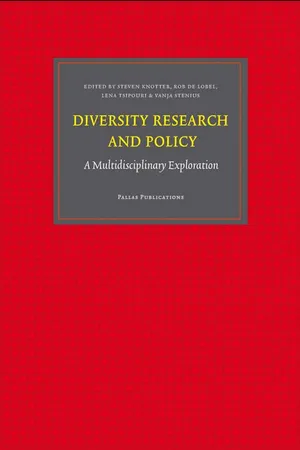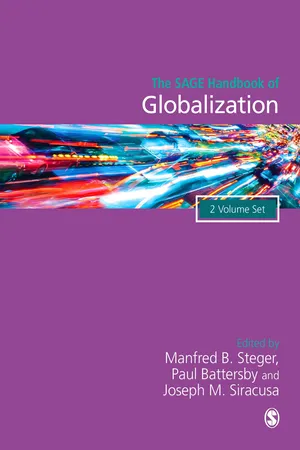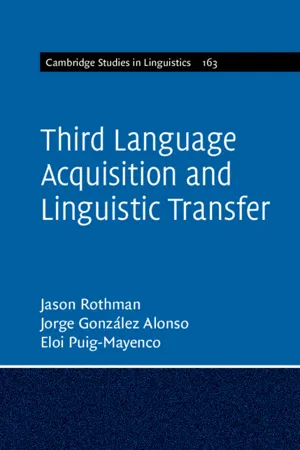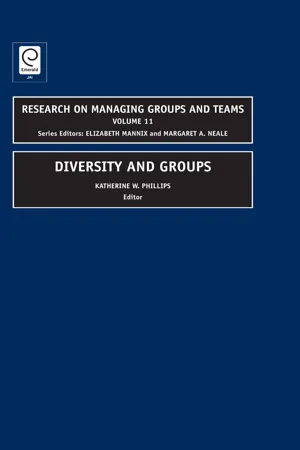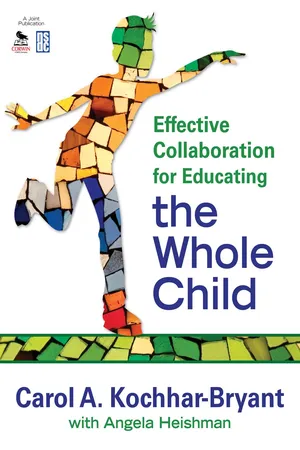Languages & Linguistics
Diversity Approach
The Diversity Approach is a linguistic theory that emphasizes the importance of studying the variation and diversity of language use within a community or society. It recognizes that language is not a static entity and that it is shaped by social, cultural, and historical factors. The approach seeks to understand the complex relationship between language and society.
Written by Perlego with AI-assistance
Related key terms
1 of 5
5 Key excerpts on "Diversity Approach"
- eBook - PDF
Diversity Research and Policy
A Multidisciplinary Exploration
- Steven Knotter, Rob de Lobel, Lena Tsipouri, Vanja Stenius, Steven Knotter, Rob de Lobel, Lena Tsipouri, Vanja Stenius(Authors)
- 2012(Publication Date)
- Amsterdam University Press(Publisher)
83 6 Linguistic Diversity Jasone Cenoz, Durk Gorter & Kathleen Heugh A Brief Description of the Discipline of Linguistics The discipline of linguistics can be defined as the systematic study of language(s), its nature, its structure and the variation in and between lan-guages. Language permeates, gives direction to and in many ways determines human experience. Linguistics as a discipline is closely related to sociology, anthropology and psychology. The main intellectual thrust in linguistics has shifted from historical work at the beginning of the twentieth century to cur-rently three predominant areas of focus: 1 language systems (semantics, syntax, phonetics/phonology), 2 the processes of language acquisition, and 3 language in culture and society. 1 Variation and diversity within and between languages can be studied under any of these three areas. Here we will focus on the third area: diversity in languages in culture and society. Language diversity and multilingualism are closely related concepts, some-times used synonymously or interchangeably. However, language diversity usually refers to the number and variation of languages and multilingualism to the use of more than one language in a given society as well as the profi-ciency in more than one language by individuals. ‘Plurilingualism’ is a term also used for the latter, among others by the Council of Europe. Already in the 1950s, Greenberg (1971) devised different measurements of linguistic diversity. He started with a simple index relating to the chance that two random members of a community speak the same language. He then fur-ther took into account the factors of linguistic distance and of ‘polylingualism’ (speakers who command two or more languages). A linguistic diversity index must take into account several factors such as the unit of analysis or the prob-ability of finding speakers. - eBook - ePub
- Manfred Steger, Paul Battersby, Joseph Siracusa, Manfred Steger, Paul Battersby, Joseph Siracusa, Author(Authors)
- 2014(Publication Date)
- SAGE Publications Ltd(Publisher)
Given the mutual threats to these diversities, can the concept of ‘biocultural diversity’ create a means to understand and support the interrelationships between biodiversity and linguistic diversity? The discourses used to describe languages under threat, such as ‘endangered languages’, ‘language conservation’ and ‘extinct languages’ have long echoed those applied to threatened species. It is only relatively recently, however, that the preservation of endangered languages has been discussed through a framework of biocultural diversity. The remainder of this chapter will review some of the key ideas around biocultural diversity as well as their key critiques.Biocultural Approaches to Linguistic Diversity
Biocultural approaches apply environmental models to the cultural sphere, and has led to theory, policy and practice that see ecological and linguistic/cultural systems as mutually embedded within each other. This represents a conceptual shift for both the global environmentalist movement and the movement towards the preservation of linguistic diversity. Macnaghten and Urry (1998) have noted the previous tendencies in the environmental literature to leave the social aspects of nature under-examined, and to make strong conceptual demarcations between ‘society’ and ‘nature’. The biocultural Diversity Approach sits in opposition to these tendencies, instead foregrounding the dialectical relationship between self, society and the natural world (Evanoff, 2011). This movement towards biocultural diversity as a means to understand and respond to languages under threat is both a conceptual position and a position of advocacy. Biocultural diversity brings to the forefront the ‘links between linguistic, cultural and biological diversity and the threats shared by these diversities’ (Maffi and Woodley, 2010: xix). As a position of advocacy, it seeks to implement change that acknowledges these links and works to preserve natural ecosystems and cultural systems in a way that honours their interconnections. Maffi and Woodley (2010) frame the central contention of the field as a ‘fundamental link between local language, ecological knowledge, cultural practices and biodiversity’ (2010: xx) and claim that ‘maintaining and restoring the diversity of life means sustaining both biodiversity and cultures, because the two are interrelated and mutually supportive’ (2010: 3). Biocultural diversity research that looks specifically at linguistic aspects of culture and its connection to nature also frequently uses the term ‘biolinguistic diversity’. In this chapter, however, while I focus on linguistic diversity, I will use the umbrella term ‘biocultural diversity’ to describe the theoretical and ethical approach and practice. I do so because a great deal of biocultural diversity research positions language as central to cultural practice and cultural preservation, and ‘biolinguistic’ approaches are thus embedded within biocultural ones. - Jason Rothman, Jorge González Alonso, Eloi Puig-Mayenco(Authors)
- 2019(Publication Date)
- Cambridge University Press(Publisher)
In our view, this is more than a clever observation of what new variables can contribute to old problems: It is a tacit acknowledgment that multilingualism is, or at least should be, our default view of language competence. In the following two sections, we will see if this is also true of social and educational perspectives, in which sequential multi- lingualism brings its own set of challenges. 2.2 Sociolinguistic Approaches Broadly defined, sociolinguistics is the study of the dynamic, multifarious relationships between language and society (see, e.g., Bayley, Cameron, & Lucas, 2013; Coulmas, 1998; Labov, 1966, 1994, 2001; Mesthrie, 2011b; Milroy & Gordon, 2003; Romaine, 1994, 1995, Tagliamonte, 2011, 2006; Wodak, Johnstone, & Kerswill, 2011, among many others). Accordingly, it is concerned with the social dimensions of language, as well as with the linguistic dimensions of society. Sociolinguistic approaches call attention to the social dimensions of language, claiming that they are as important to understanding language (its acquisition and particularly its use) as is the study of abstract linguistic (mental) competence that is typical of cognitive-based approaches to linguistics. According to some scholars, linguistic paradigms devoid of sociolinguistic considerations are unable to provide truly explana- tory accounts of many aspects pertaining to ‘real language,’ or the way language is used in social contexts and changes over time (Mesthrie, 2011a; but see Cornips, 1998, 2018). 2.2 Sociolinguistic Approaches 61 Although we do not agree with the above statement, we would concede that sociolinguistic and cognitive-based approaches typically operate under distinct theoretical concerns and motivating questions. We also see, highlighted parti- cularly by the study of multilingualism itself, that neither set of approaches could answer all linguistic questions worthy of serious consideration in utter isolation from each other.- eBook - PDF
- Katherine W. Phillips(Author)
- 2008(Publication Date)
- Emerald Group Publishing Limited(Publisher)
THE LANGUAGE OF BIAS: A LINGUISTIC APPROACH TO UNDERSTANDING INTERGROUP RELATIONS Quinetta M. Roberson, Bradford Bell and Shanette C. Porter ABSTRACT This chapter explores the role of language in the relationship between diversity and team performance. Specifically, we consider how a linguistic approach to social categorization may be used to study the social psychological mechanisms that underlie diversity effects. Using the results of a study examining the effects of gender, ethnicity and tenure on language abstraction, we consider the potential implications for team processes and effectiveness. In addition, we propose a revised team input-process-output model that highlights the potential effects of language on team processes. We conclude by suggesting directions for future research linking diversity, linguistic categorization, and team effectiveness. The workforce of the 21st century is characterized by more women and employees with diverse ethnic backgrounds, alternative lifestyles, and Diversity and Groups Research on Managing Groups and Teams, Volume 11, 267–294 Copyright r 2008 by Emerald Group Publishing Limited All rights of reproduction in any form reserved ISSN: 1534-0856/doi:10.1016/S1534-0856(08)11012-X 267 intergenerational differences than in the past (Langdon, McMenamin, & Krolik, 2002). In response to increased foreign competition, renewed interest in the quality of work life, and changing task requirements and technologies, firms have moved toward flatter organizational structures featuring groups and teams during this same time (Kozlowski & Bell, 2003). Accordingly, effective interaction among members of diverse teams becomes more critical to smooth organizational functioning (Jackson & Ruderman, 1995). Although researchers have explored group processes in an effort to understand effective interaction among diverse members (see Williams & O’Reilly, 1998 for a review), little attention has been given to the psychology of diversity. - Carol A. Kochhar-Bryant, Angela Heishman, Carol A. Kochhar-Bryant, Angela S. Heishman(Authors)
- 2010(Publication Date)
- Corwin(Publisher)
When considering the nature of students’ “diversity,” it is important to distinguish among literacy, linguistic diversity, and cultural diversity. Literacy has traditionally been defined as the ability to read and write. Today the definition has been expanded to include the ability to locate, evaluate, use, and communicate using a wide range of information resources including text, visual, audio, and video sources (Fagan, 2001). Linguistic abilities can place limitations on how the student becomes literate. For instance, a parent who only speaks Latvian, the official language of Lithuania, will probably only be fully literate in Latvian. Socioeconomic status and level of education also impact literacy. Some immigrants flee their native countries because of limited resources and poor conditions; therefore, their level of literacy in their first language may be far below their spoken language ability in that same language. Conversely, some bilingual or multilingual immigrants have emigrated to work in technical and professional fields in the United States and are literate in several languages. Cultural diversity is defined as the presence of individuals who are from a variety of cultural backgrounds. More specifically, cultural diversity refers to differences among people based on a shared ideology and valued set of beliefs, norms, customs, and meanings evidenced in a way of life. Diversity includes differences in gender, race, ethnicity, language, nationality, disability, or religion among various groups within a community, organization, or nation. Cultural and linguistic diversity is reflected in several characteristics by which groups differ, including their perceptions, concepts of time, personal space concepts, thinking processes, social groupings and relationships, appearance, posture, symbolism and nonverbal communication (Dahl, 1998)
Index pages curate the most relevant extracts from our library of academic textbooks. They’ve been created using an in-house natural language model (NLM), each adding context and meaning to key research topics.
